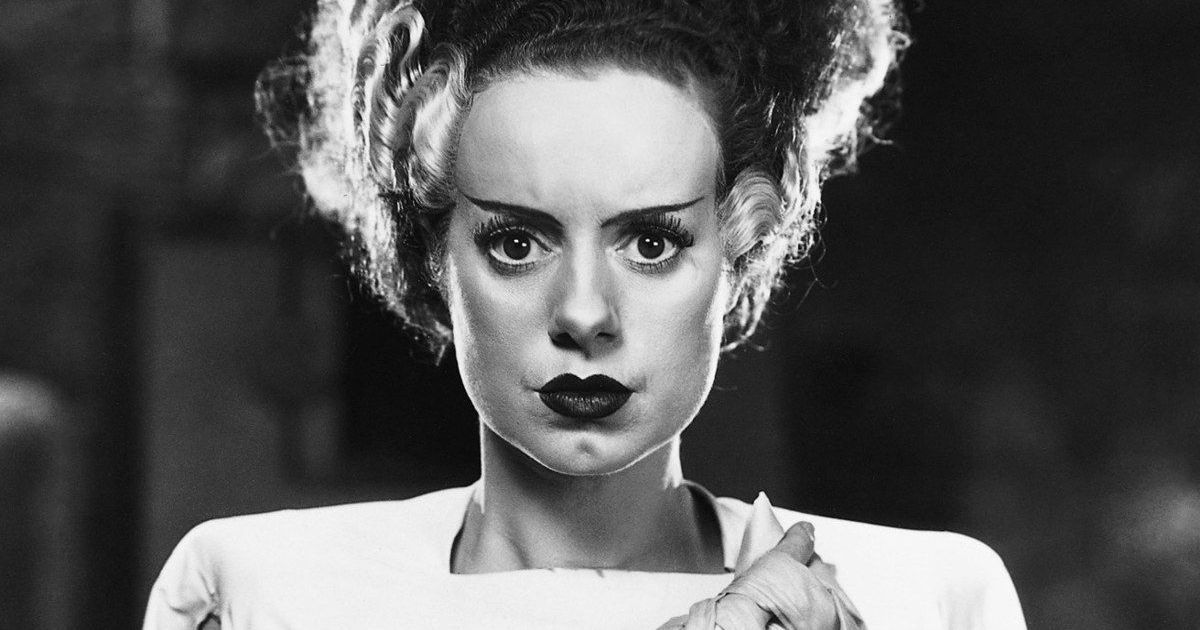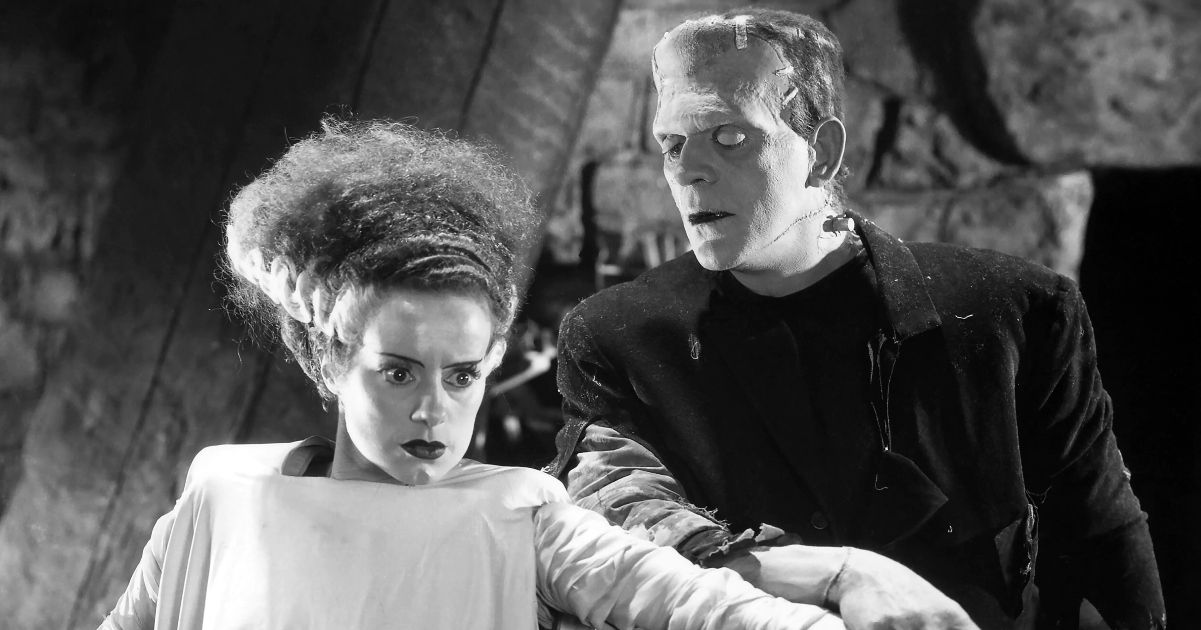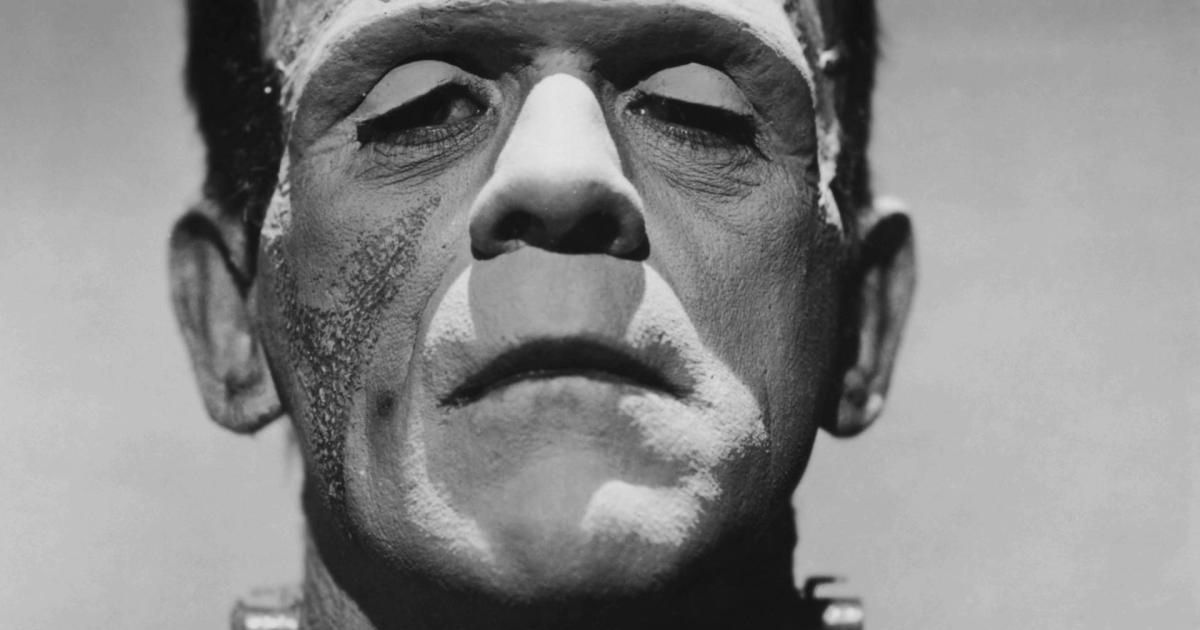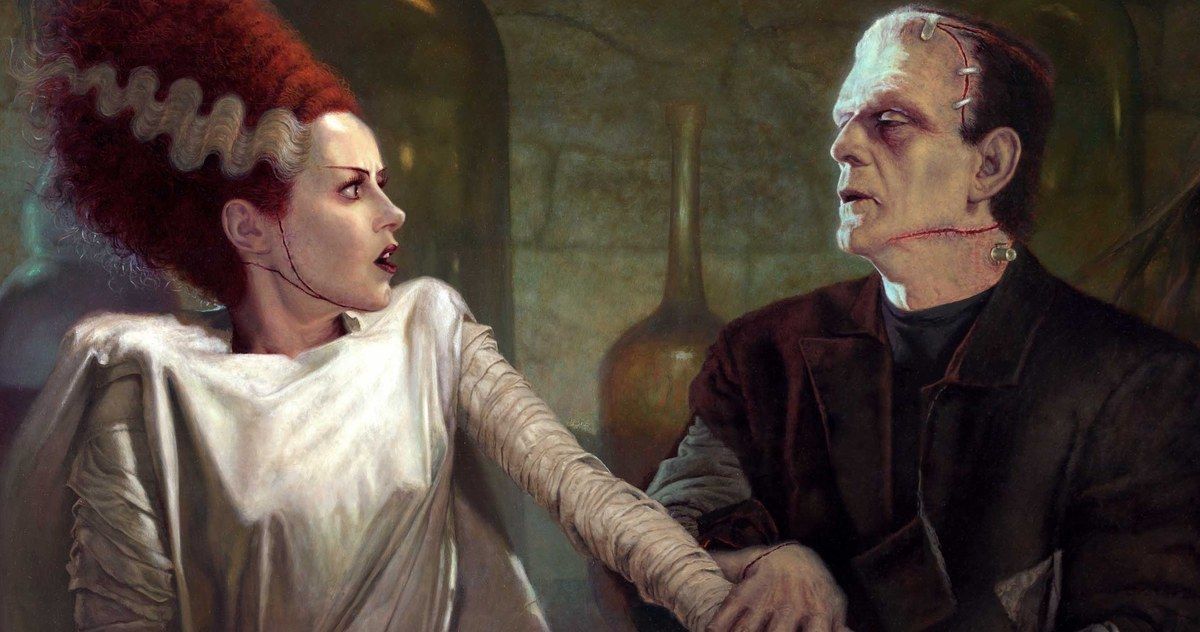The Bride of Frankenstein was first released by Universal Pictures in 1935. Directed by James Whale, it follows the events of the 1931 classic horror film Frankenstein, fitting easily into the chronology of Universal's Monsterverse. The title itself is a bit of a misnomer in that it leads the audience to believe that the film follows Frankenstein or Frankenstein's monster’s wife... neither of which is true. In actuality, the "bride" in question is never even a bride. While both are horror icons on their own, The Bride of Frankenstein stands apart from both its predecessors and successors in Universal’s monstrous slate. The film is highly sophisticated for the time, featuring deep layers of characterization and developing the monsters in a way never seen before.
In this outing, Frankenstein's monster is gifted with genuine human emotion, which shouldn't come as a surprise seeing as how he was, after all, a living human at some point. In his quest for genuine human companionship, his intentions of friendship are met with screaming damsels and fiery townsfolk. So you see, the title The Bride of Frankenstein is not nearly as literal as one would expect from your average monster flick. It's clever and inviting and diverts from the expectations of a traditional creature feature. Its clever use of story mechanics makes it easily one of the best Universal Monster movies of all time.
Updated on October 13th, 2023 by Amanda Minchin: If you're a fan of Universal's monstrous slate, then you'll be glad to know this article was just updated with even more info.
Is The Bride of Frankenstein a Gothic Horror?
The Bride of Frankenstein is a true sequel before the age of sequels. The model has been replicated and overdone for generations since, but it works quite well in this case. The Bride of Frankenstein operates to springboard off of the first installment, establishing the repercussions of what has just transpired. Without its predecessor, the story would not be nearly as effective in evoking the true gothic tones that are as close to Mary Shelley’s source material as we've ever quite gotten since.
In the first film, Doctor Victor Frankenstein goes to maddening lengths to create a man from the dead. Unveiling the mysteries of life and death caused the doctor to nearly perish in the first film (a note which is corrected upon his awakening beside his heart soon-to-be-be bride in this film). This film too opens on a very gothic note. Picking up right where the previous film ended, the thunder and lightning in the prologue establish a bit of tension. It is the discussion of the terror to come in the aftermath of Mary Shelley’s Frankenstein that provides the framework for this dark opening. There is a sense of urgency from the village goers as the windmill burns down in flames around them, smothering the creature and killing the Baron/Scientist who created him. Their hysterics create an uneasy overtone.
In the sequel, however, Frankenstein is far more hesitant. Barely rejuvenated from his prior shenanigans, he is told by Doctor Pretorious of his advances towards a new creature. Pretorious is also on a quest to create life. He considers himself a God in his image and has a slew of pint-sized experiments to back up his claims. Doctor Pretorious’ little people are as strange as they are comical. For instance, each is given an occupation, from Ballerina to Queen. While they all interact with each other and with the outside world, the most notable among them is perhaps the antics of the love-sick King, who just wants his mate. Pretorious has been successful in creating pint-sized humans but has yet to figure out how to transfer their intelligence to someone of regular human size. In that regard, he and Victor Frankenstein need each other to succeed.
There is of course an inherent darkness to his method, which we see in Frankenstein's initial reaction to these creations. He sees them for what they are - miniature recreations of humans held captive, trapped in jars. Achieving this required seamless editing and ahead of its time for special effects. It is highly impressive to see the production value in this early 30s film, especially one whose effects still hold up.
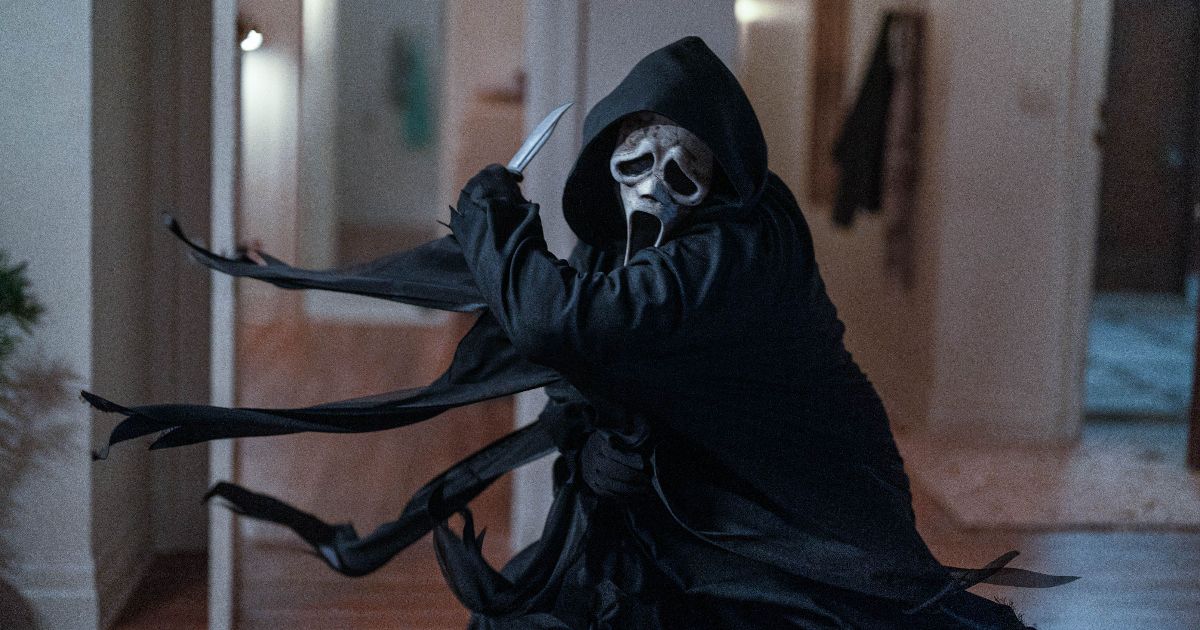
20 Times the Stakes Were Raised in Horror Sequels
Every horror movie sequel has a moment where things take a turn for the worst.What Does the Creature Want in The Bride of Frankenstein?
In the sequel, The Monster is shown to be a bit more intelligent than in the first film. There is a childlike naivety to him. He can not communicate what he truly wants. Emotionally speaking, he can see himself and who he has become in reflections. None of this, of course, is helped by being chased by an angry mob. All the creature wants in the film is a friend, but he must constantly be on the defensive instead.
This is where the true horror of the film comes forth, because, frankly, we feel for the creature. He hates living through the body of a dead man. He has undeniable strength, which he, for the most part, only uses when he feels attacked. The murders, including that of the small child from the first film, were out of naivety. At the time, he just didn't know his own strength and what he could do with it. In this film, he seems to know what he is capable of, and yet we still feel for him. As he is shot at, chased, and tortured, we know that he has the mentality of a child. Unfortunately, the townspeople do not seem to care. The most notable reason for this connection to the audience is Boris Karloff’s performance. He truly shines throughout the film, especially in his moments with the blind man, with whom he seeks shelter. From him, he learns the true nature of friendship.
The blind man is perhaps the most important character in the film. He evokes a true nature of kindness towards the creature, as they can both connect. He can not see, and the creature can not speak, which of course leads to some disconnect. However, their friendship is the most emotional moment in all of Universal’s monster movie saga. They both crave friendship based on their loneliness and seclusion from the outside world. They live in an all too familiar darkness. The tear-jerking moments come when the blind man praises God for giving him a friend. The creature sobs, and we truly feel a sense of hope for him.
Karloff’s performance is outstanding because he must evoke love and youthful innocence in the body of a monster. He must be ferocious, but also scared and lonely. The creature just wants a friend, and that is where the tragedy of the film truly lies.
What Does the Female Monster Represent in The Bride of Frankenstein?
As the creature establishes his motivations for wanting a friend like him, the finale of the film builds until, after an hour of waiting, we finally have it - a new, female Frankenstein. Dubbed The Monster's Mate, her unveiling is as scary as it is unsettling. Shown in a flowing white dress with a churchlike score in the background, she slowly rises from the table. Elsa Lanchester's monster is all jagged movements and allure.
The wedding is practically set as the meeting of the monsters approaches. But what does she do? She shrieks upon his very sight. Just like all the others. Despite the attempts to get the two into increasingly romantic positions throughout the lab, it soon becomes apparent that there is no hope for this pairing. While Pretorious and Frankenstein have achieved their success, the true arc of this story lies in their failure to consider whether their two creations are compatible. Does she want to be with him as much as he wants to be with her? There was no choice for either of them. Did they have to go the romantic route? Perhaps not. After all, Frankenstein's monster seemed just as happy with companionship, let alone love. In the end, when this is chosen for him, he walks away with neither.
Is The Bride of Frankenstein A Tragedy?
What defines tragedy? In the Shakespearean sense, tragedy is classified as disaster and death. This film contains all too much of both. Victor Frankenstein is not the protagonist in this film, or, at least, not as much as he was in the first. His creation, The Monster, is the unlikely protagonist in The Bride of Frankenstein. It is his goal of wanting friendship that drives the narrative alongside that of the scientists. He is finally able to speak more and more by the end of the film. By then, he can convey his true wants, which connects the character to the audience. There are glimmers of hope for the poor soul, but they are taken from him when it soon becomes apparent that his mate isn't interested. Because of this, we never get a true resolution for any of those potential attempts at friendship.
This is an unexpected turn for the film, one in which we see The Monster truly defeated in this world. He ends up sacrificing himself, murdering his mate and Dr. Pretorious in the process. But he saves Frankenstein and Elizabeth, proving that the creation has power over his creator. In doing so, this horror classic visualizes the egotistical nature of humanity. The film’s message about life and death flips as the dead decide who lives and dies.
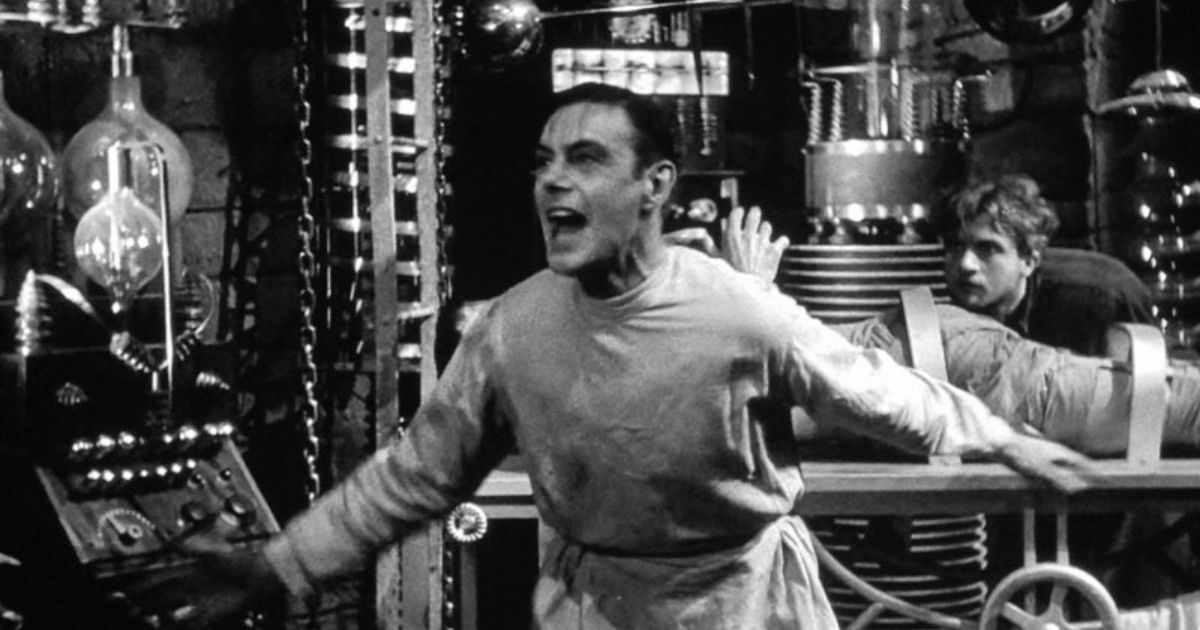
Best Mad Scientists in Movies, Ranked
Mad scientists have been a part of storytelling for generations. Here are some of the best interpretations throughout film history,A Defining Role of Female Representation in Early Cinema
Female representation is practically rampant throughout the film compared to others of the time. With only a handful of other female monsters to the Universal name, including Dracula's Daughter and The Invisible Woman, Elsa Lanchester's Monster's Mate manages to capture in just five minutes of screen time the essence of what this film is about. And that's just five minutes of screen time.
Interestingly enough, Lanchester also plays the role of the storyteller in the film, in the form of the acclaimed Mary Wollstonecraft Shelley. In the opening scene, she's seen with her husband, Percy, and Lord Byron. This duality is telling. In being the one to bring this story to fruition, Shellecanto speaks to forced societal norms, both as a published female author at the time and as a creature of horror. There are surprisingly similar expectations for both, as is clearly outlined in the men's appraising and borderline sexist dialogue. Interestingly enough, the writer Shelley is listed as a co-writer on the project. While she had long been deceased at the time, being credited was surely hard-won.
Of course, this film is far from perfect. One has only to see to the antics of Una O'Connor's frantic servant, Minnie for example. A character on the constant precipice of hysterics, this role is unfortunately more in keeping with the time. What is perhaps most telling, however, are the numbers. In other creature features, such as The Creature from the Black Lagoon, there is more than double the screen time for the title creature. Still, this film should be commended for being one of the earliest attempts to bring deeper representation and meaning to the horror genre. With plenty more monsters to choose from, future filmmakers should stand up and take notice.

